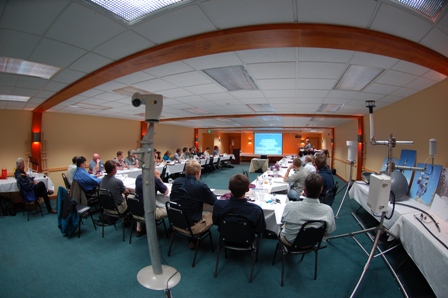2008
Western States Rural Transportation Technology Implementers Forum
June 3rd-5th, Mount Shasta, California
SCHEDULE OF EVENTS
Tuesday, June 3, 2008
4:00 pm to 7:00 pm Registration
5:00 pm to 6:30 pm Reception (no-host)
6:30 pm to 9:00 pm Dinner
Wednesday, June 4, 2008
7:00 am to 8:00 am Breakfast Buffet
8:00 am to 12:05 pm Welcome and Presentations
12:05 pm to 1:05 pm Lunch
1:05 pm to 5:15 pm Presentations, Evaluations, Remarks
5:45 pm to 9:00 pm Evening Social and Dinner, Lake Siskiyou Beach
Thursday, June 5, 2008
7:30 am to 10:00 am Breakfast Buffet
8:20 am to 8:30 am Concluding Remarks and Thank You’s
8:30 am to 11:00 am In-depth Equipment/Application Demonstrations
PRESENTATIONS*
A Tale of Two RWISs
Ken Beals, Caltrans District 2
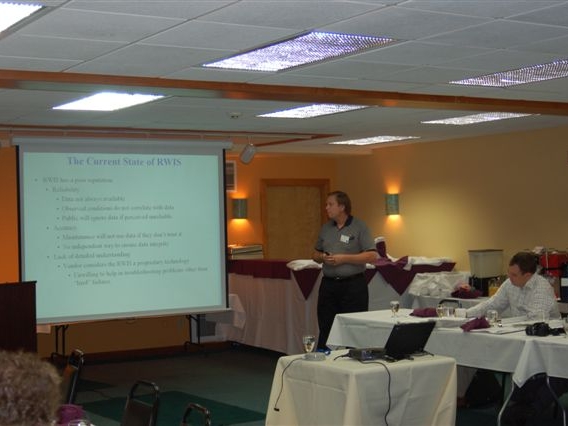
|
|
This presentation was a detailed look at RWIS sensors in Caltrans District 2, specifically how they measure surface and atmospheric conditions and what parameters are involved in these measurements. The presentation explained how to use the RWIS to control Extinguishable Message Signs (EMS) and more accurately inform the public of hazardous conditions.
|
Ken Beals, Caltrans, talked about the trials and tribulations of RWIS.

WSDOT Field Tests of Wireless and Microwave Vehicle Detection Systems
Ted Bailey, Matt Neeley; Washington Department of Transportation
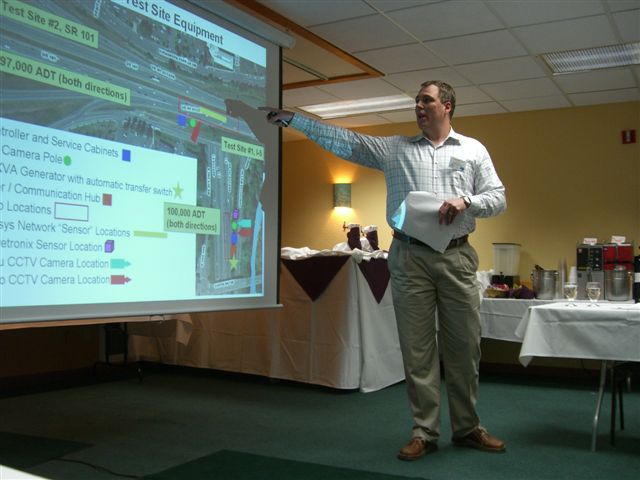
|
|
This presentation began by describing two field test sites specifically used for testing ITS equipment. Field tests were conducted on three types of systems. Vehicle speed and count data were collected and the results were shared along with discussion about the installation processes and lessons learned.
|
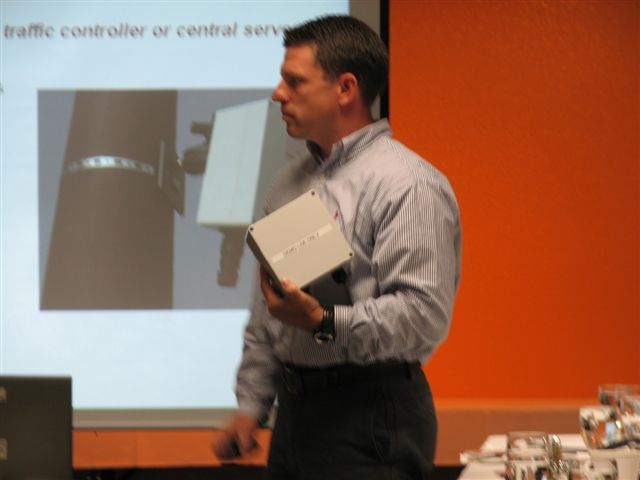
|
|
Ted Bailey shows one of WSDOT’s test sites for wireless and microwave vehicle detection systems.

Matt Neeley, WSDOT, explains the 'nuts and bolts' of vehicle detection sensors.

TMC-TMS Communications: Overview and Demonstration
Doug Galarus, Western Transportation Institute
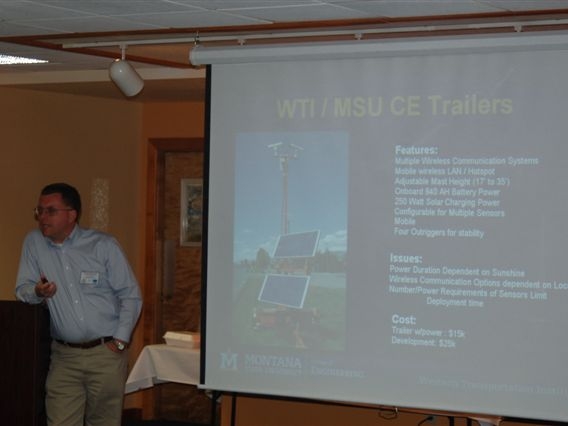
|
|
This presentation described the results of an evaluation of communication technologies for application to TMC-TMS communications. Wireless and wired technologies were evaluated for prospective use, and general pros and cons as well as site-specific analyses were presented. An emphasis was placed on promising wireless technologies. The live “parking lot demonstration” conducted the next day complemented this presentation.
|
Doug Galarus, WTI, gave an overview of TMC to TMS communication systems.

ODOT Traveler Information Systems
Galen McGill, Oregon Department of Transportation
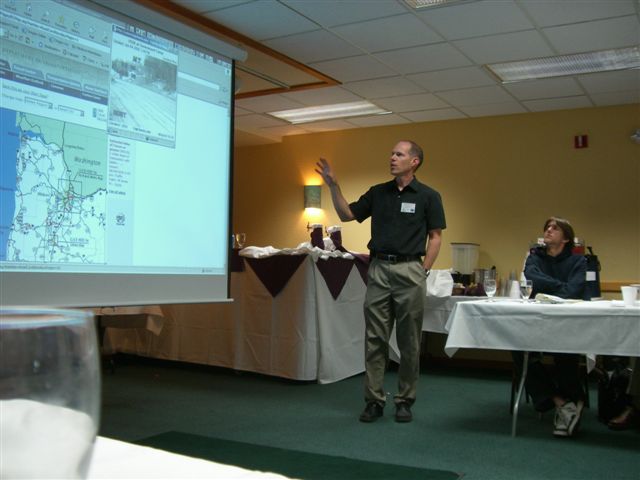
|
|
Oregon DOT has an extensive Advanced Traveler Information System (ATIS). This presentation reviewed the system first at a high level and then broke it down into subsystems to describe in detail the components, technologies, data “hand-offs” and image processing that make up the system as a whole. Experiences and lessons learned from 10 years of constructing, implementing, and maintaining ATIS technologies were shared.
|
Galen McGill, ODOT, discussed Oregon's traveler information systems.

DEMONSTRATIONS
Hand Held Terminals
Ryan Huffman, Michael Edwards; Caltrans Division of Research & Innovation
Automated Radio Network Design
Jeffrey Sharkey, Western Transportation Institute
Mesh Box
Justin Krohn, Western Transportation Institute
TMC-TMS Communications: Portable ITS Trailer and Communications Demonstration
Larry Hayden, Gary Schoep, Justin Krohn; Western Transportation Institute
Ryan Huffman and Michael Edwards, Caltrans DRI student research assistants, demonstrate a hand held data terminal they have developed.
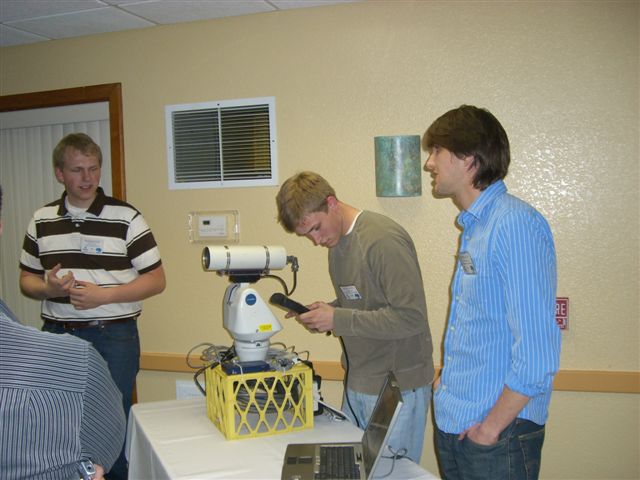
Jeffrey Sharkey, WTI Fellowship student, discussed automated radio network design.
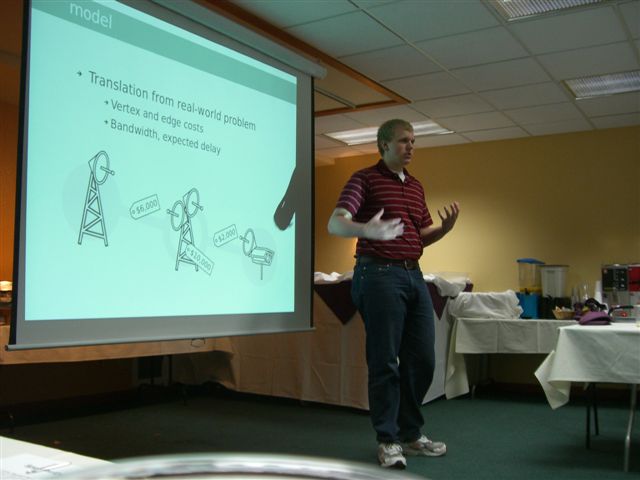
Justin Krohn, WTI student research assistant, shows an OLSR visualization of a live mesh network.
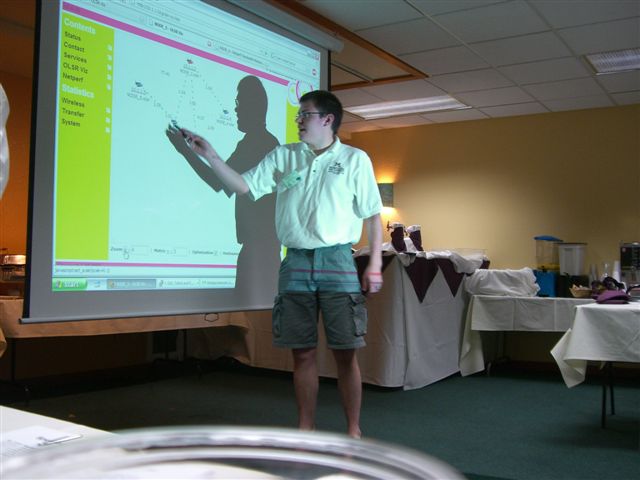
WTI demonstrated TMC-TMS communications with a portable ITS trailer and communications set-up.
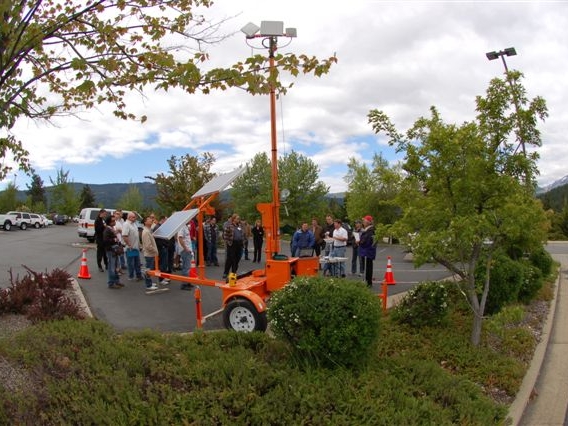
Larry Hayden, WTI TMC-TMS communications demonstration.
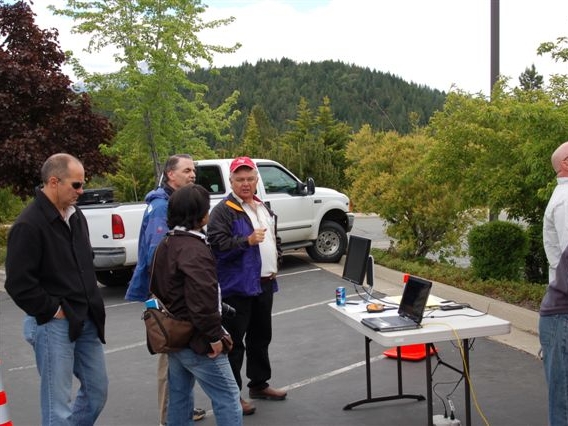
Gary Schoep, WTI TMC-TMS communications demonstration.
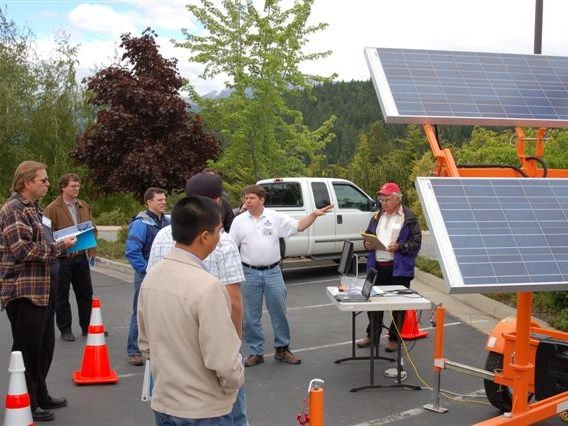
TOP
*These presentations are posted as developed by the speakers and presented at the 2008 Forum. Alternative accessible formats of these documents can be provided upon request. Persons with disabilities who need an alternative accessible format of this information, or who require some other reasonable accommodation to participate, should contact Neil Hetherington, Visual Communications Manager, Western Transportation Institute, Montana State University, PO Box 174250, Bozeman, MT 59717-4250, telephone number 406-994-3566, e-mail: hetherington "at" montana.edu; or Dana May, Business Development Manager, Western Transportation Institute, Montana State University, PO Box 174250, Bozeman, MT 59717-4250, telephone number (406) 994-6361, e-mail: dana.may "at" montana.edu. |
